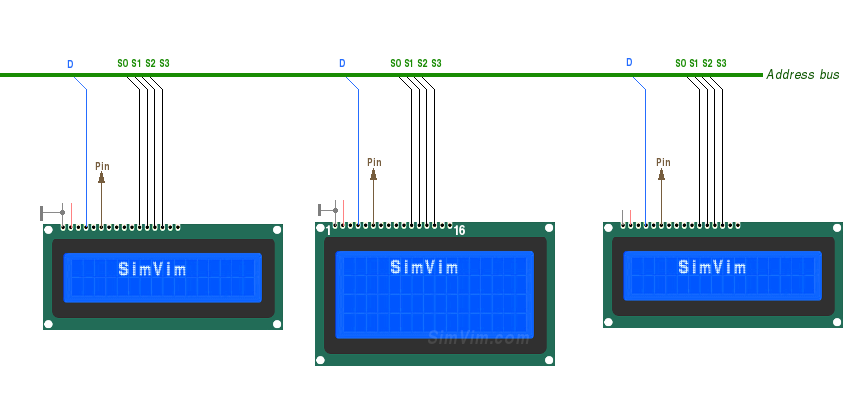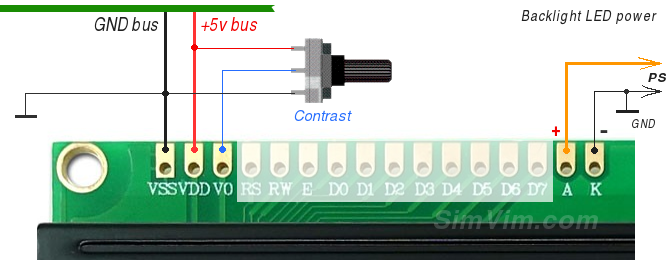



Note: We left the option of connecting the LCD display to the master board directly via the data bus. You can use any pins numbered 20 or higher. But, as most of pins can be used for input multiplexers and LED drivers, you can have up to 12 LCDs on the SimVim LCD slave board.
You need to use only 5 signal lines and GND connected to the data bus and one signal line connected to the output pin assigned for this particular display (only pins with numbers 20,21 and 30-53 can be used!). Four address/data lines S0,S1,S2,S3 should be connected to 4 data inputs of every LCD - D4,D5,D6,D7. The "D" signal of the bus is connected to the "RS" (register select) input of the LCD.


These displays don't consume much power, so you can use +5v from the slave board. To be able to see something on the screen, you need to add contrast control to the input (V0) using a small potentiometer / trimpot (resistance can be from 1K to 10K Ohm) connected between +5V and GND:


On the other side of the LCD there are two inputs for the backlight LED ( +A - anode, -K - cathode). The "K" input connected to the common GND, and "A" - to the "+" of the power source, which can also be an additional power supply.
Although the backlight LEDs can consume quite much power, you can still connect the A input to the bus +5V instead of an external source. This is especially viable if you use a powerful source for +5v line in your system bus, not taken from the controller board +5 output. Use an additional resistor (50 - 100 Ohm) on the A input in this case.